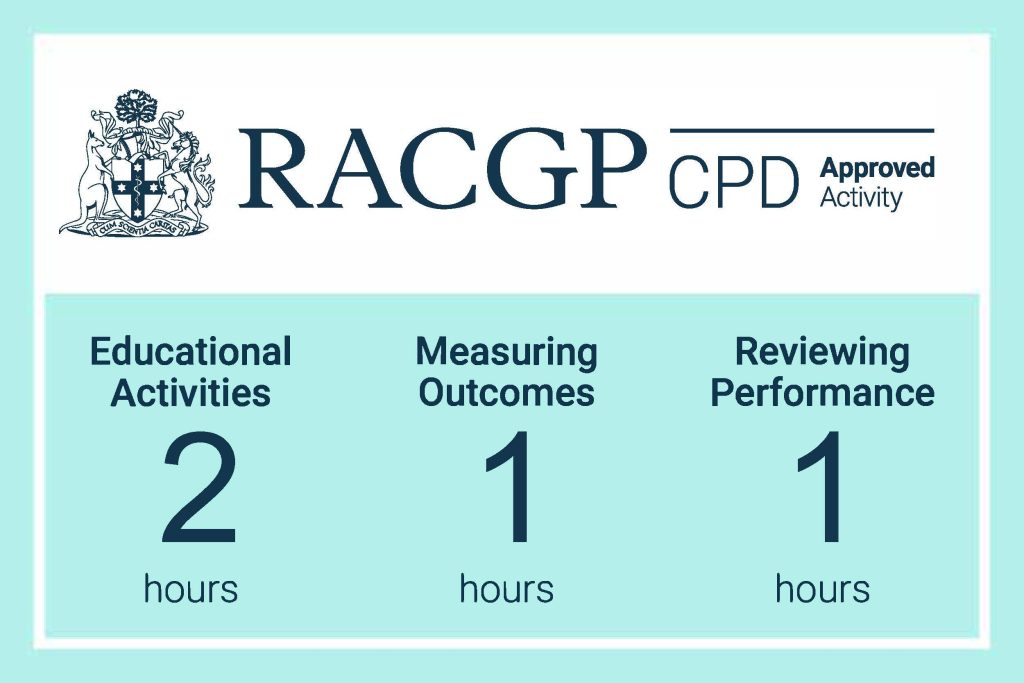Articles / Wound care in general practice

0 hours
These are activities that expand general practice knowledge, skills and attitudes, related to your scope of practice.
0.5 hours
These are activities that require reflection on feedback about your work.
0 hours
These are activities that use your work data to ensure quality results.
These are activities that expand general practice knowledge, skills and attitudes, related to your scope of practice.
These are activities that require reflection on feedback about your work.
These are activities that use your work data to ensure quality results.
Wounds should not take ten, five or even one year to heal, but old-fashioned practices (like applying Betadine- or normal saline-soaked dressings) may hinder healing and mean some wounds persist way longer than they should, says Hayley Ryan, Wound Clinical Nurse Consultant and Director of WoundRescue, which provides wound care education, referral pathways and consulting services throughout Australia and New Zealand.
Here are some key principles to keep in mind when assessing and treating wounds.
The dressing is just a tool and should only be chosen after a thorough assessment of the patient and then the wound, Ms Ryan says.
“If you do not have the right diagnosis of that wound, you may not be selecting the right treatment plan to get it on track to healing. That is one reason we see a lot of wounds failing to heal within the normal times we would expect. That can be anywhere from two to four weeks for a basic skin tear, four to six weeks for chronic wounds, and up to three months for an ulcer, as a guide.”
Ms Ryan says important questions include:
While product suppliers often recommend choosing a dressing based on wound type and stage, Ms Ryan cautions against relying solely on this approach.
“Don’t look at a wound to say, ‘this is the stage of injury, this is what I’m going to put on it,’” she says. “Look at every wound individually and say, ‘What am I trying to achieve with the appropriate dressing?’”
“Look at the symptoms in that wound: Is there a lot of fluid? Is it dry? Is it moist enough that it’s going to achieve appropriate and timely healing? Do I need to put something around the edges to stop it breaking down further, like a barrier cream to avoid maceration?”
Ms Ryan offers the following advice for choosing the three key wound management products.
Before choosing a cleansing agent, think about its purpose, which is to remove surface contaminants, debris, slough, and devitalised tissue. This preps the wound bed to dress the wound. Normal saline is suitable for acute wounds. For chronic and complex wounds, an antimicrobial solution such as polyhexamethylene biguanide (e.g. Prontosan), octenidine or hypochlorous acid (e.g. Grandudacyn or Microdacyn) may be suitable if you suspect a buildup of microorganisms is delaying wound healing.
If the wound is too wet, choose a dressing that will soak up excess fluid, such as an alginate or gelling fibre. If it’s too dry, choose one that will moisten it, such as a hydrogel—unless the wound is ischaemic, in which case further investigation is needed.
Consider whether you need an additional absorbent dressing and whether a crepe bandage is adequate for fixation and suitable for the person’s age.
“Here’s my biggest tip,” Ms Ryan says. “With a venous ulcer, the quicker you can get that patient into true compression bandaging—and I’m not talking about a TED stocking––then you will see that wound healing as it should.”
She recommends arranging Doppler TPIs/ABPIs to determine the class of compression that is safe to apply.
It’s essential to keep enough products to manage common wound types, Ms Ryan says.
“If you don’t have the right product to put on at the right time, then it can result in delayed healing.”
Brand does not matter, she adds, suggesting you have the following on hand at a minimum:
Dressings are expensive, she notes, and the Federal Government’s Chronic Wound Consumable Scheme—set to kick off sometime next year—will cover the cost of wound consumables for people aged over 65 with diabetes, and for Aboriginal or Torres Strait Islander people aged over 50 with diabetes.
Follow up care is crucial to keep wound healing on track, she adds.
Tell patients how often the dressing needs changing and when to come back for review, which may be in a week or two, or more frequently if they need help with wound care.
Consider whether they’ll need help to shower to ensure the dressing stays dry and explain warning signs to look out for.
“Patients need to be informed that if there’s any increased redness, heat, swelling, pain exudate, leakage—come back, don’t wait,” Ms Ryan says.
It’s also good to refer people to a wound specialist as early as possible if you have any concerns, she adds.
“When in doubt, get it checked out. Wound specialists exist because we want to help every patient with a wound to get healing on track, with the right treatment, at the right time.”
WoundRescue has staff in every state and territory and will see anybody outside of a hospital. GPs can refer patients to WoundRescue via email or fax.
Finally, remember prevention is always better than cure.
Ms Ryan suggests reviewing a patient’s skin as part of a general consult. Simple things like checking turgor, dryness, and recommending twice-daily moisturiser application can help prevent skin injuries, she says, particularly in people aged over 65 years and in young children whose elastic skin can tear easily.
More information
WoundRescue can deliver education for GPs/practice nurses virtually or onsite and offer ‘10-minute coffee break’ training sessions. Email admin@woundrescue.com.au to find out more.
Based on this educational activity, complete these learning modules to gain additional CPD.

STIs – Common and Tricky Cases

Role of Testosterone During Menopause – Evidence vs Hype

RSV Prevention in Infants and Pregnant Women

Vision and Driving Fitness: Key Insights for Health Practitioners



Yes
No
Listen to expert interviews.
Click to open in a new tab
Browse the latest articles from Healthed.
Once you confirm you’ve read this article you can complete a Patient Case Review to earn 0.5 hours CPD in the Reviewing Performance (RP) category.
Select ‘Confirm & learn‘ when you have read this article in its entirety and you will be taken to begin your Patient Case Review.
Menopause and MHT
Multiple sclerosis vs antibody disease
Using SGLT2 to reduce cardiovascular death in T2D
Peripheral arterial disease
